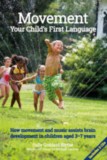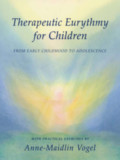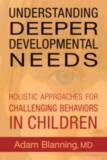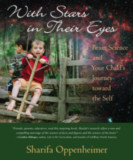Reflexes, Movement, Learning & Behaviour
Analysing and Unblocking Neuro-motor Immaturity
- Publisher
Hawthorn Press - Published
11th July 2023 - ISBN 9781912480784
- Language English
- Pages 320 pp.
- Size 6.15" x 9.2"
Reflexes, Movement, Learning & Behaviour covers an area of education and emotional wellbeing that tends either to be overlooked or to fall between professional domains. It provides information that helps parents, teachers, and other professionals to understand what lies behind the underachieving children and adults who suffer from balance-related anxiety disorders.
The method fills a yawning gap in “the system,” which often fails to recognize underlying physical factors in underachievement, behavioural, and emotional problems. Identifying some of the mechanics involved is the first stage in moving from victimhood to being able to live with a problem and, in many cases, overcome it. This helps parents and teachers to understand children better, introduce more effective coping strategies when needed, and ideally correct some of the underlying problems, enabling children and adults to become more resilient and flexible in response to stress and to realize their real potential.
Educators, learning professionals, child psychologists, doctors, movement specialists and parents will find this book to be an indispensable and unique resource.
“Provides a readable yet comprehensive overview of primitive and neonatal reflexes and postural control. These are holistically integrated into descriptions of human senses, neural structures and systems, along with their relevance for learning delays, disorders, and psychological conditions. Her expositions and recommendations draw on empirical-scientific analysis, many years of therapeutic experience, and a phenomenological-symptomology, offering readers from wide ranging backgrounds her unique theoretical and therapeutic insights into reflexes and learning.”
“If you view a learner as just a brain carried around by a body, it is rather like servicing a car engine without checking the brakes and tyres. That might be fine, but often you will waste fuel and occasionally you will crash. Sally is one of the leading experts in understanding how the body and mind work together, how to spot where there is a problem and then what to do about it. These issues are not simple, but they are important for thousands of children. Reflexes, Movement, Learning and Behaviour will give you a comprehensive resource to work with.”
— David Morgan, creator of the Easyread System and All Aboard Phonics
“At a time when parents and professionals emphasise and analyse school readiness and learning yet children are the most sedentary in history, Sally Goddard Blythe has put the horse back before the cart. Physical literacy and movement have always been the poor cousin to proper cerebral learning, until now. This book provides an excellent comprehensive overview of this emerging area.”
—Dr. Aric Sigman, child health education lecturer, author of Getting Physical, winner of The Times Educational Supplement Information Book Award
C O N T E N T S:
Introduction: Why Physical Development Matters and Its Relationship to School Readiness and Learning Success
1. Primitive Reflexes—Their Influence on Life and Learning
2. From Primitive Reflex to Postural Control
3. Brain Development: Establishing a Hierarchy
4. The Senses: Interreceptor and Exteroceptor Systems
5.Examples of Reflex Testing
6. What Can Be Done?
7. History of the INPP Method and Selected Papers by Lawrence Beuret, MD, and Sally Goddard Blythe
Appendix 1: Case Studies
Appendix 2: A Short History of Reflexes and the INPP Method
References
Glossary
Sally Goddard Blythe
Sally Goddard Blythe is the author of seven books on variou8s aspects of child development. Her professional life has been dedicated to investigating and remediating underlying physical factors in children presenting with specific learning difficulties and adults suffering from anxiety and panic disorder. Although closely linked to The INPP Method, of which she is currently the international director, her interest in a physical basis for learning and emotional difficulties stems from a broad based education, which began with an interest in the arts and moved over to the sciences. Informed by the many children she has worked with in a practice spanning three decades, she has lectured in many different parts of the world and continues to provide training in The INPP Method to students from all over the world.







